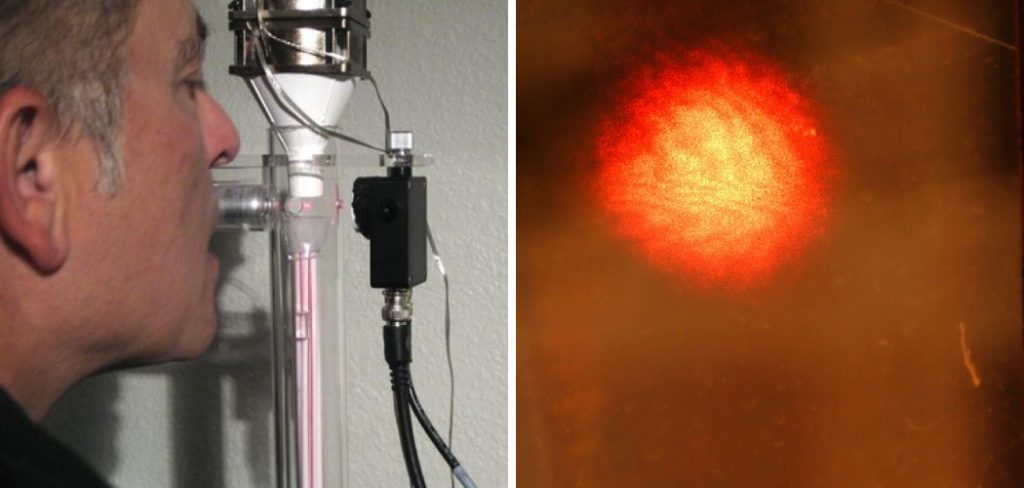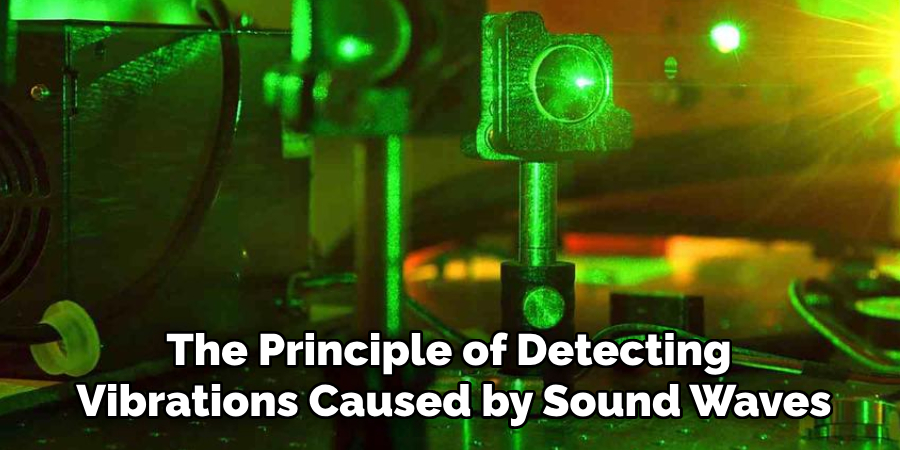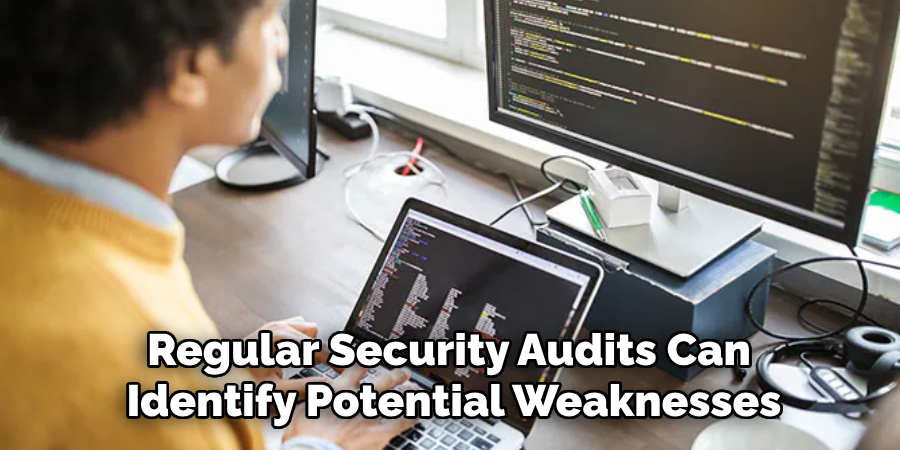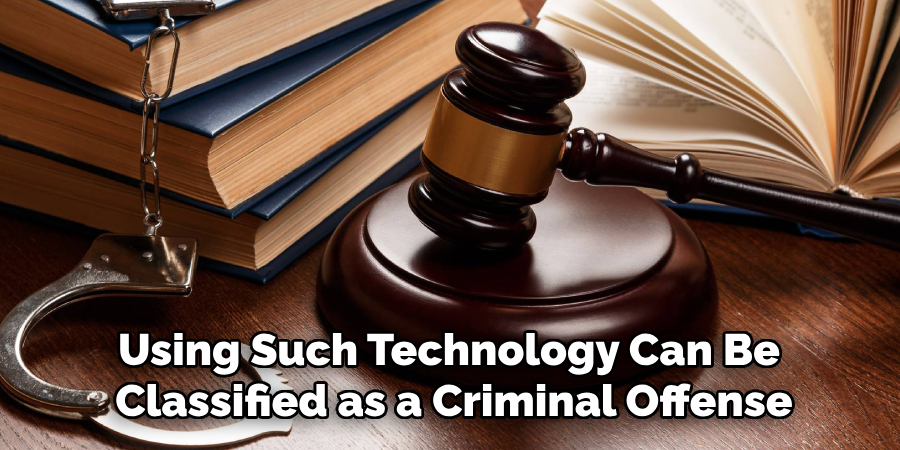Protecting sensitive information from laser eavesdropping, a sophisticated form of surveillance, is crucial in today’s digitally interconnected world. This guide delves into effective methods for how to block laser eavesdropping and safeguard privacy. From understanding how laser microphones work to implementing countermeasures like installing window treatments or using specialized materials, each step is designed to mitigate the risk of unauthorized surveillance.

Emphasizing the importance of regular security audits and staying informed about emerging technologies, this article empowers individuals and organizations to proactively defend against potential threats. By adopting these strategies and maintaining vigilance, readers can enhance their privacy and prevent sensitive information from falling into the wrong hands.
Importance of Protecting Privacy from Laser Eavesdropping
The significance of protecting privacy from laser eavesdropping cannot be overstated. As technological advancements continue to evolve, so too do the methods employed by malicious actors to intercept confidential communications. Laser eavesdropping, which utilizes laser beams to detect sound vibrations from surfaces, poses a severe threat to the security of private conversations.
This form of surveillance can be executed from a considerable distance, making it a discreet and effective tool for obtaining sensitive information without physical intrusion. For individuals and organizations alike, the potential risks include the compromise of personal privacy, corporate espionage, and the leaking of valuable intellectual property.
By prioritizing measures to block laser eavesdropping, such as employing soundproof barriers and anti-surveillance technologies, one can significantly lessen the likelihood of unwanted exposure and safeguard critical data integrity. Taking proactive steps to shield conversations from laser interception is essential in maintaining privacy in an increasingly interconnected and vulnerable digital landscape.
Understanding Laser Eavesdropping
Laser eavesdropping operates by capturing sound vibrations from surfaces like windows using a laser beam. When someone speaks inside a room, their voice causes minute vibrations on the window panes. A laser beam directed at the window captures these vibrations, which are then interpreted by a receiver to reconstruct the conversation. The process, while technically complex, allows eavesdroppers to listen in without physically entering the target area. Given its covert nature and the ability to function over large distances, laser eavesdropping poses a significant challenge to traditional security measures.
Understanding the fundamentals of how laser microphones work is the first step in developing effective countermeasures against this form of surveillance. By recognizing the methods employed in laser eavesdropping, individuals and organizations can better appreciate the importance of implementing robust privacy protection strategies.
How Laser Microphones Work
Laser microphones operate based on the principle of detecting vibrations caused by sound waves. To begin, an eavesdropper directs a laser beam towards a reflective surface, typically a window pane or other flat object, within the target area. When someone speaks, their voice generates sound waves that create minuscule vibrations on this surface. The laser beam, upon striking the vibrating surface, reflects off with slight variations in its path corresponding to the vibrations.

A sensitive photoelectric cell or optical sensor captures the reflected laser beam and converts these variations into an electrical signal. This signal undergoes processing to filter out noise and enhance the quality of the audio. Advanced algorithms then analyze the signal to reconstruct the original sound waves, allowing the eavesdropper to effectively “listen” to the conversation from a distance.
The effectiveness of laser microphones hinges on several factors, including the power and precision of the laser, the sensitivity of the optical sensor, and the ambient environmental conditions. Even though setting up such a surveillance system requires technical expertise, its implementation can be inconspicuous and highly effective, necessitating robust countermeasures to ensure privacy. Understanding the intricacies of laser microphone operations underscores the importance of developing and maintaining sophisticated anti-surveillance strategies.
Maintaining Digital Security
In addition to protecting against physical forms of surveillance like laser eavesdropping, maintaining robust digital security is equally vital. As our reliance on digital communications and storage grows, so too does the threat landscape, with cybercriminals continuously devising new tactics to breach defenses. To safeguard digital assets and sensitive information, a multifaceted approach is essential. This includes the implementation of strong, unique passwords and enabling multi-factor authentication (MFA) to add an extra layer of security. Regularly updating software and firmware to patch vulnerabilities is also crucial in preventing unauthorized access.
Moreover, employing advanced encryption methods for data at rest and in transit ensures that even if data is intercepted, it remains unreadable to unauthorized parties. Network security measures such as firewalls, intrusion detection systems, and secure VPNs help protect against external threats, while regular security audits can identify potential weaknesses before they can be exploited. Additionally, educating employees and users about common cyber threats, such as phishing attacks and social engineering, can significantly reduce the risk of successful cyber infiltration.

By integrating these strategies into a comprehensive digital security plan, individuals and organizations can better protect themselves against the myriad of cyber threats present in today’s interconnected world. Maintaining vigilance and staying informed about the latest security trends and technologies are key components in fortifying digital defenses and ensuring the integrity and confidentiality of sensitive information.
10 Methods to Block Laser Eavesdropping
Step 1: Install Window Tinting
Window tinting can help to block laser eavesdropping by reducing the amount of light that passes through windows. Choose a tint with a high visible light transmission (VLT) rating for maximum privacy.
Step 2: Use Reflective Material
Reflective material, such as aluminum foil or reflective window film, can be placed on windows to reflect lasers and prevent them from being able to pick up sound vibrations.

Step 3: Plant Trees or Shrubs
Strategically planting trees or shrubs outside of windows can also help to block laser eavesdropping. The foliage will act as a barrier and make it difficult for lasers to penetrate through.
Step 4: Install Security Cameras
Security cameras can not only act as a deterrent for potential eavesdroppers, but they can also capture any suspicious activity involving laser devices.
Step 5: Use White Noise Machines
White noise machines emit a constant background noise that can drown out any conversations or sounds that may be picked up by laser eavesdropping devices.
Step 6: Conduct Regular Sweeps
To ensure your space is free from any hidden laser devices, conduct regular sweeps using a laser detection device or hire a professional sweep team.
Step 7: Invest in Soundproofing Materials
Soundproofing materials, such as acoustic foam panels, can help to reduce the amount of sound that travels through walls and ceilings, making it harder for laser eavesdropping devices to pick up conversations.
Step 8: Keep Your Distance
If you suspect someone may be trying to use a laser eavesdropping device on you, try to keep your distance from windows and walls where sound vibrations may travel more easily.
Step 9: Use Encryption Technology
When communicating sensitive information, use encryption technology on electronic devices to prevent anyone from intercepting your messages via laser eavesdropping.
Step 10: Be Mindful of Your Surroundings
Be aware of your surroundings when discussing sensitive information and try to avoid public places or areas where laser eavesdropping devices may be more easily concealed.
Legal and Ethical Considerations
The use of laser eavesdropping devices raises substantial legal and ethical concerns. In many jurisdictions, intercepting communications without consent is a violation of privacy laws and can result in severe legal consequences. Unauthorized surveillance using such technology can be classified as a criminal offense, carrying penalties that may include fines and imprisonment. It’s essential for individuals and organizations to understand local laws and regulations regarding surveillance and adhere strictly to legal standards to avoid punitive measures.

Ethically, the deployment of laser eavesdropping tools challenges fundamental human rights, including the right to privacy and confidentiality. Invasive surveillance tactics can erode trust and violate the principles of personal integrity and respect. Organizations must weigh the moral implications of such practices and consider the potential harm to individuals’ privacy. Ethical guidelines advocate for transparency, consent, and proportionality in surveillance activities, ensuring that any monitoring conducted is justified and minimally intrusive.
Educational Resources and Training
In the realm of cybersecurity and anti-eavesdropping measures, continuous education and training play a pivotal role in staying ahead of evolving threats. Organizations and individuals should proactively seek out educational resources that offer the latest insights and tactics in the fight against cyber espionage and unauthorized surveillance.
Online Courses and Certifications
Numerous online platforms provide comprehensive courses on cybersecurity fundamentals, advanced defensive techniques, and ethical practices. Certifications from esteemed bodies such as CompTIA, (ISC)², and SANS Institute are highly regarded in the industry. They cover a wide array of topics, from network security and ethical hacking to privacy laws and ethical considerations.
Books and Publications
Authoritative texts and industry publications serve as invaluable resources for deepening one’s understanding of surveillance technologies and countermeasures. Books such as “The Art of Invisibility” by Kevin Mitnick and “Cybersecurity for Beginners” by Raef Meeuwisse provide both foundational knowledge and advanced strategies.
Conclusion
In a world where digital advancements continually push the boundaries of technology, maintaining the security and privacy of sensitive information has never been more crucial. Laser eavesdropping represents a sophisticated threat that requires comprehensive strategies to mitigate effectively.
By implementing measures such as window tinting, the use of reflective materials, strategic landscaping, and employing white noise machines, individuals and organizations can significantly reduce the risk of unauthorized surveillance. Thanks for reading, and we hope this has given you some inspiration on how to block laser eavesdropping!
About
Safety Fic is a distinguished figure in the world of Diy design, with a decade of expertise creating innovative and sustainable Diy solutions. His professional focus lies in merging traditional craftsmanship with modern manufacturing techniques, fostering designs that are both practical and environmentally conscious. As the author of diy, Safety Fic delves into the art and science of Safety Fic-making, inspiring artisans and industry professionals alike.
Education RMIT University
(Melbourne, Australia) Associate Degree in Design (Safety Fic) Focus on sustainable design, industry-driven projects, and practical craftsmanship. Gained hands-on experience with traditional and digital manufacturing tools, such as CAD and CNC software.
Nottingham Trent University
(United Kingdom) Bachelor’s in diyfastly.com and Product Design (Honors) Specialized in product design with a focus on blending creativity with production techniques. Participated in industry projects, working with companies like John Lewis and Vitsoe to gain real-world insights.
Publications and Impact
In diy, Safety Fic his insights on indoor design processes, materials, and strategies for efficient production. His writing bridges the gap between artisan knowledge and modern industry needs, making it a must-read for both budding designers and seasoned professionals.
